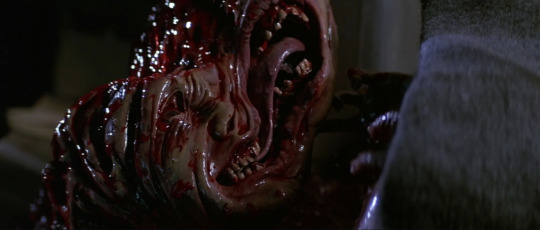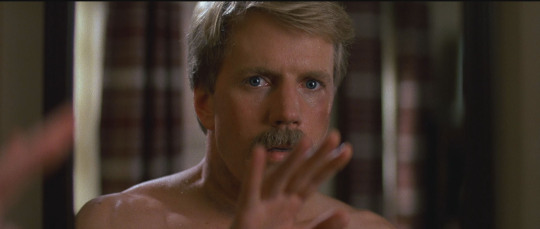#source: sc anthology
Explore tagged Tumblr posts
Text


#gemini x aquarius#sagaxcamus#saintseiya#aquariuscamus#geminisaga#fanart#sxc#search: pinterest#source: sc anthology
2 notes
·
View notes
Text
The Licentiati
The majority of Cosmonists don’t identify with any sect or like, adjective on their belief system. Particular communities honor the deities and ideas from within the broad Cosmonist umbrella that are most relevant to them without the direction of any authority outside the very slight influence of their local shrines and priestesses. But the authorities of the holy city of Ovaiakon--where the writings of the Poets were first compiled--and later the Hyperians, have made several attempts to secure the loyalty of their subjects via regulation of the faith of their subjects, and many of these attempts have sparked organizations specifically established to counter them.
A few years ago when the SC universe was really new, I tried to do overview posts for all the different religions from different worlds but got bogged down in trying to even describe the diversity of interpretations of Cosmonism. I still want to describe all the different belief systems from around the galaxy because they’re all really interesting, but first I think I’m going to do a series on different major Cosmonist sects because that’s behind a lot of the cultural push and pull happening in the main setting.
So without further ado, the Licentiati!
This is a sect/set of beliefs within the Cosmonist umbrella based around the mainstream teachings of the Sitherian praeceptors, who traditionally have been considered the highest-ranking interpreters of religious law in Basilea. Maybe at one point you could say that the Licentiati (“sanctioned”--as in sanctioned by the throne) were the arbiters of “Official” Cosmonism, but that point was a very long time ago. It’s a religion that inherently doesn’t sit well with centralization; the Empress can puppeteer the praeceptors all she wants, but as long as local priestesses and the Holy Poems hold that one’s local cosmological forces have the final say, there are going to be those devout enough to listen to them first. That said, the Hyperians (and certain of the planetary High Queens before them) have Put The Work into cultivating a Basilean nationalistic sentiment, and there are certainly those who believe every word a praeceptor writes simply because she has the favor of Our Most Exalted Lady The Empress Matri Hyperiae.
History
The first praeceptors were trained by a priestess named Centora--so named because she was supposedly the hundredth descendant of the captain-queen who founded Ovaiakon, the “city of destiny” where the writings of the Holy Poets were first anthologized (the liturgical/ceremonial sections of which are thought to have been authored by Centora herself). Although they were trained by an actual priestess, praeceptors do not perform any ceremonies themselves--they’re purely teachers who train “sanctioned” staff for “sanctioned” shrines and temples. At the start there were six, now there are 216 (it’s traditional, though not required, to initiate them in classes of six. Early Cosmonists were big on sixes because the early Taregans were big on sixes. The early Taregans were big on sixes because they perceived the seasons of their world as occurring in multiples of six, although they’re not actually that tidy). Somewhere along the line the office of the Archpraeceptor was created as a liaison to the public and the royal family. Although it’s tempting to go lol lesbian space pope about that (I know I do!) it’s important to note that the Archpraeceptor isn’t actually above the others despite her title--she’s more like a very holy press secretary.
Organizational structure
The thing that DOES make the Archpraeceptor special is that she carries requests from the Empress to the rest of the praeceptorate, and she’s responsible for conveying their collective decisions to the public, so one of her main qualifications is being a brilliant lecturer. Praeceptors are teachers, not authorities, in theory, but with her skills and intergalactic platform to bolster their agenda, they still hold a ton of moral influence.
Sanctioned holy maidens also include literators--resident scholars of the Poets who live and work at local temples and act as arbitrators in doctrinal disputes--and satellite priestesses of the imperial city’s Temple of the Excelsic Barycenter, who train with them directly and are expected to deviate little from their pet ideas (see below).
Some vestals are Licentiati and some aren’t. A majority of Orellistian and Levinoxian orders in the Seven Suns are/were sanctioned, but only a slight majority, and orders devoted to the minor goddesses are all over the place.
Teachings
Even though they didn’t originate it, the Licentiati are the main dispensers of the idea that the forces of the universe dictate a rigid Order that’s best not fought against. Being that they get most of their perks from the Hyperians’ favor, they have a vested interest in positioning the hierarchy as inevitable.
On the other hand, the praeceptors have been around a lot longer than the empire has, and historically they’ve been a main source of the guiding relational quality of Basillan and Sitherian morality--loyalty is the highest virtue, your first duty is to take care of your own (or those directly above and below you), and the goddesses, as your most powerful benefactresses, are to be showered with reverent affection so that they know the love with which they provide for you is reciprocal.
The Licentiati have been responsible for laying the groundwork for the flipflop on Levinoxia that we see underway in the Vol. 2 flashbacks, framing chaos and the spiritual conception of the vacuum as potentially confusing influences to be avoided by all but the very advanced in religious study at first, and then as outright corrupting, a shift that occurred gradually within a few generations of teaching but went public almost overnight.
Ritual
The praeceptors are obviously very into the calendars of ritual offices recorded in the Holy Poets, because *Bernie Sanders voice* they wrote the damn liturgy. They’re also the fondest of all the sects of portraying offerings and prayers to the goddesses as simply the highest tier of feudal tribute and homage, a stance a few controversial praeceptors have even taken as far as being opposed to mundane fealty (why give a cut to a Great Lady when you could give all to the Greatest Ladies?). These obviously didn’t last long because they had to fall in line with their own royal/imperial backers, but it was an interesting logical extreme, though sadly not as revolutionary as it sounds when coupled with the conservative ideas about the inherent fittedness of some folks to rule over others that they also tend to espouse.
4 notes
·
View notes
Text
Evil in the Mirror: John Carpenter’s Revealing ‘Prince of Darkness’ by Joshua Rothkopf

[Last year, Musings paid homage to Produced and Abandoned: The Best Films You’ve Never Seen, a review anthology from the National Society of Film Critics that championed studio orphans from the ‘70s and ‘80s. In the days before the Internet, young cinephiles like myself relied on reference books and anthologies to lead us to films we might not have discovered otherwise. Released in 1990, Produced and Abandoned was a foundational piece of work, introducing me to such wonders as Cutter’s Way, Lost in America, High Tide, Choose Me, Housekeeping, and Fat City. (You can find the full list of entries here.) Our first round of Produced and Abandoned essays included Angelica Jade Bastién on By the Sea, Mike D’Angelo on The Counselor, Judy Berman on Velvet Goldmine, and Keith Phipps on O.C. and Stiggs. Over the next four weeks, Musings will continue with another round of essays about tarnished gems, in the hope they’ll get a second look. Or, more likely, a first. —Scott Tobias, editor.]
It’s generally accepted that John Carpenter wasn’t a personal filmmaker—not personal in the way that Martin Scorsese, only five years his senior and Italianamerican from the start, was. Carpenter grew up movie-crazy in the ’50s and ’60s. He wanted to make Westerns exactly at the moment when that became an unrealistic career goal. His heroes were Alfred Hitchcock, Orson Welles and, above all, Howard Hawks. It’s been nourishing to listen to Amy Nicholson’s wonderful eight-part podcast Halloween Unmasked, still in progress, and to hear Carpenter—usually oblique in interviews—open up about his boyhood in the Jim Crow–era South. He mentions visiting an insane asylum during a college psych trip and locking eyes with a prisoner who spooked him. That may be the basis for killer Michael Myers but, by and large, this was a guy who wrote what he dreamed up, not what he knew.
That’s not to suggest Carpenter didn’t develop his own signature style. When he arrived in Los Angeles in 1968 to attend film school at USC, he reinvented himself, transforming from a Max Fischer–like creative wunderkind (he was a rock guitarist and high-school class president) into a laconic, bell-bottomed cowboy who listened more than he spoke. He was too cool for nerdy Dan O’Bannon, who worked with him on Dark Star. He was too cool for Hollywood itself, even after he’d succeeded there, rarely mingling socially and turning down projects like Top Gun and Fatal Attraction.
But the cool act was a bit of smokescreen. I once asked Carpenter about it, and he owned up to a private sense of pain in regard to his work. “I take every failure hard,” he told me in 2008, singling out the audience’s abandonment of The Thing, a remake of his favorite film (one that actually improves on its source). “The movie was hated. Even by science-fiction fans. They thought that I had betrayed some kind of trust, and the piling on was insane. Even the original movie's director, Christian Nyby, was dissing me.”

Carpenter would rebound from that 1982 commercial disaster—as well the indignity of getting sacked from Firestarter—by playing the game even better. He directed Jeff Bridges to a Best Actor nomination on Starman (that’s as rare as a unicorn for a sci-fi performance) and, just as things were turning golden, blew all his capital again on 1986’s Big Trouble in Little China, which was rushed and subsequently buried in the massive shadow of Aliens. “You try to make a studio picture your own, but in the end, it’s their film,” Carpenter said in our interview, the Kentucky rascal turned bitter. “And they’re going to get what they want. After that experience, I had to stop playing for the studios for a while and go independent again.”
This is the pivotal moment in Carpenter’s career, the one that fascinates me the most. It should fascinate more people, given what the filmmaker did. Divorced and with a two-year-old son, Carpenter is, at that point, 38 years old. He’s already feeling like a Hollywood burnout, with a decade of ups and downs to prove it. The solution was a pay cut, a big one: Prince of Darkness, financed through “supermensch” Shep Gordon and Alive Films and released in 1987, would be made for a grand total of $3 million, the first title in a multi-picture deal that guaranteed Carpenter complete creative control.

Scrappy but never chintzy, Prince of Darkness is the most lovable of movies. On the surface, it has all the cool minimalism a JC fan could ask for: elegant anamorphic compositions (Gary Kibbe’s muscular cinematography adds millions more in production value), a seesawing synth score, a one-location “siege” structure akin to the director’s Assault on Precinct 13 and The Thing. The movie also has Alice Cooper killing a grad student with a bicycle. It has a swirling canister of green Satanic goo in a church basement.
Critics, by and large, were unkind. In a representative review from the New York Times, Vincent Canby called it “surprisingly cheesy,” singling out first-time screenwriter Martin Quatermass for particular scorn (he “overloads the dialogue with scientific references and is stingy with the surprises”), not realizing that this was a pseudonym for Carpenter himself. Would it have mattered? Released days before Halloween, Prince got clobbered by the gig Carpenter turned down, Fatal Attraction, still surging in its sixth weekend.
But below the surface—and still a matter for wider appreciation—is the film that Carpenter dug himself out of his psychic hellhole to make: his most personal horror movie, starring a version of himself. Prince of Darkness is about watching and waiting. In a way, it’s a romantic view of the auteur’s own time at school. It’s a movie about the evil that stares out of the mirror (i.e., yourself). Like all of his films, it arrived under the possessive title John Carpenter’s Prince of Darkness. In my mind, that apostrophe is actually a contraction: John Carpenter Is Prince of Darkness. And Prince of Darkness is him.

First, let’s understand what $3 million means in 1987. To compare it to some other movies of the same period, Blue Velvet’s budget is twice as large. Hannah and Her Sisters, largely shot in Mia Farrow’s apartment, was funded at $6.4 million. When Scorsese decided to go indie and make his audacious The Last Temptation of Christ, he had a $7 million allowance—and that’s for robes and sandals. Carpenter, on the other hand, would be doing practical special effects in camera. He’d be doing a movie with gore and supernatural nuttiness. In a now-quaint New York Times article from April 1987 titled “Independents Making It Big” (“The major studios have abandoned small, serious, risky films, the kind that often win prizes”), Merchant Ivory’s Oscar-winning A Room With A View gets prime positioning with a big photograph; that one has a $3 million budget, roughly. (Not coincidentally, Carpenter’s financiers, Alive Films, are name-checked in the piece as the producers of Alan Rudolph’s Trouble in Mind.)
Coming off Big Trouble in Little China’s estimated $20 million budget (it was probably more), Carpenter would be making a radical shift. But he agreed to Alive’s terms. He’d return to doing things fast and smart, to distilling his vision down to its cleanest, clearest grammar, to getting it done in 30 days (Halloween was shot in 20, over four weeks in May 1978). Even if you disregard the whole of Prince of Darkness’s content—and we won’t be doing that—Carpenter’s desire to work in total artistic freedom is breathtaking. He will do what it takes to move forward.
A little plot: In Prince of Darkness, scientists, theologians and academics plunge into a dilapidated church where they power up their equipment and study a mysterious genie in a bottle: an “anti-god.” The scenario has some of the pseudo-tech fizz of Poltergeist or, in a lighter vein, the Harold Ramis scenes in Ghostbusters. It’s not meant to hold up under scrutiny. Carpenter, who says he was reading books about quantum uncertainty at the time (maybe not the most comforting bedside material given his professional predicament), gives pages of chewy dialogue to the twin father figures of his oeuvre: Donald Pleasence, returning from Halloween and Escape from New York, plays an unnamed, worried priest; and Big Trouble’s wizened Victor Wong appears as an esteemed professor of metaphysical causality.

If the movie has a conventional hero (it doesn’t), it’s Brian, a student who splits the difference between creepy and generically handsome. He’s played by Jameson Parker, then a TV star on Simon & Simon. Or at least I think it’s Jameson Parker. Unlike his more famous San Diego private detective, Brian sports a robust, porn-star-worthy moustache. It makes him look swarthy, mysterious—a little like the lanky John Carpenter himself, who shoots these early scenes in classrooms and hallways at his alma mater, USC. “I spent many happy years at SC as a film student,” Carpenter says on Shout! Factory’s collector’s Blu-ray. “I really enjoyed myself. I learned everything about how to make movies there.”
Watching Prince of Darkness is as close as we’ll come to seeing the director’s formative years re-enacted, memoir-style. In getting back to basics, Carpenter decided to do it literally. Brian sits in class listening; he has a bit of a Laurie Strode moment looking out the window, distracted. Who is he? He’s a young scientist observing evil, almost flirting with it. He spies on a pretty girl in the courtyard (Lisa Blount). She’s got a boyfriend and it irks him, wordlessly. Later, Brian will woo her to bed and use some hard-core Howard Hawks dialogue on her: “Who was he? The one that gave you such a high opinion of men?” he says, straight out of Lauren Bacall’s playbook in To Have and Have Not. It works. She kisses him.
The movie isn’t all wish-fulfillment. In fact, it’s charming how fully the Carpenter surrogate recedes into the team; Brian isn’t even a factor in the final showdown. Maybe his job is to watch other people vanquish evil. That would make sense, since it’s his creator’s comfort zone. In the meantime, the offscreen Carpenter is building some of his grossest sequences, spraying unsuspecting people in the mouth with streams of ectoplasm (à la Rob Bottin’s landmark FX in The Thing), mounting parallel action and deploying beetles, maggots and ants where necessary.

Prince of Darkness has one moment that’s proven unforgettable, transcending even the horror genre. It’s an eerie transmission, the voice slowed down and distorted: “This is not a dream…not a dream…” DJ Shadow samples it a few times on his groundbreaking debut, 1996’s Endtroducing. (The voice is actually Carpenter’s, impossible not to notice once you’ve been made aware of it.) He’s supposed to be a future dude reaching backward in time—“from the year one, nine, nine, nine”—maybe to prevent a biblical apocalypse. All we see is a jittery handheld shot of a silhouetted robed figure slowly emerging from the church, the ominous end-of-the-world smoke gathering.
The economy of the shot is beautiful, Carpenter achieving the texture of a half-remembered nightmare using only a capture-video-off-a-TV-screen trick. (It’s very Inland Empire—and come to think of it, that basement cylinder of swirling green evil is a lot like the glass box from the first episode of the rebooted Twin Peaks: The Return.) So in a situation where Carpenter is facing his most prohibitive spending limits, he’s actually expanding his craft. Prince of Darkness signals his own creative rehabilitation after turning his heel on the studios. Or, to quote the film’s poster: “It is evil. It is real. It is awakening.”
What does it mean that Carpenter’s big payoff involves a mirror? These Cocteau-like shots were some of the most dangerous to pull off. One of them involved plunging a prosthetic hand into highly toxic liquid mercury (a substance the crew had to drain from their hydraulic cranes just to make the gag work). Then, to capture the action on the “other side” of the mirror, poor Lisa Blount had to swim submerged in a darkened swimming pool while an underwater camera shot upward at the glimmering surface. I include these technical details not only to express awe at Carpenter’s commitment (along with that of his collaborators), but also to stress the obvious: The mirror climax was really important to him. The movie’s final seconds are the whole of Prince of Darkness’s reflexivity in a single cut: Brian, woken from a double dream, approaches his bedroom mirror. We see from the perspective of the glass. He touches that porn ’stache tentatively, then reaches out. Cut to black.
It’s not easy to touch that mirror—to walk away from everything you’ve labored to achieve over years, to a place where it’s just you and your talent and what you can do. To me, that’s what Prince of Darkness expresses, subtly. Creatively, the experiment worked: It led directly to Carpenter’s 1988 stealth masterpiece They Live, his most confident political statement and a kindred project in its use of real L.A. locations. That film’s critical reputation has already been defended at large. But maybe it’s time to rally behind the moment slightly earlier, when the director had to rediscover who he was, and what he wanted—and when he found a way to turn everything around.

#john carpenter#halloween#prince of darkness#the thing#they live#horror film#produced and abandoned#demon#big trouble in little china#assault on precinct 13#joshua rothkopf#oscilloscope laboratories#o-scope labs#film writing#musings
6 notes
·
View notes